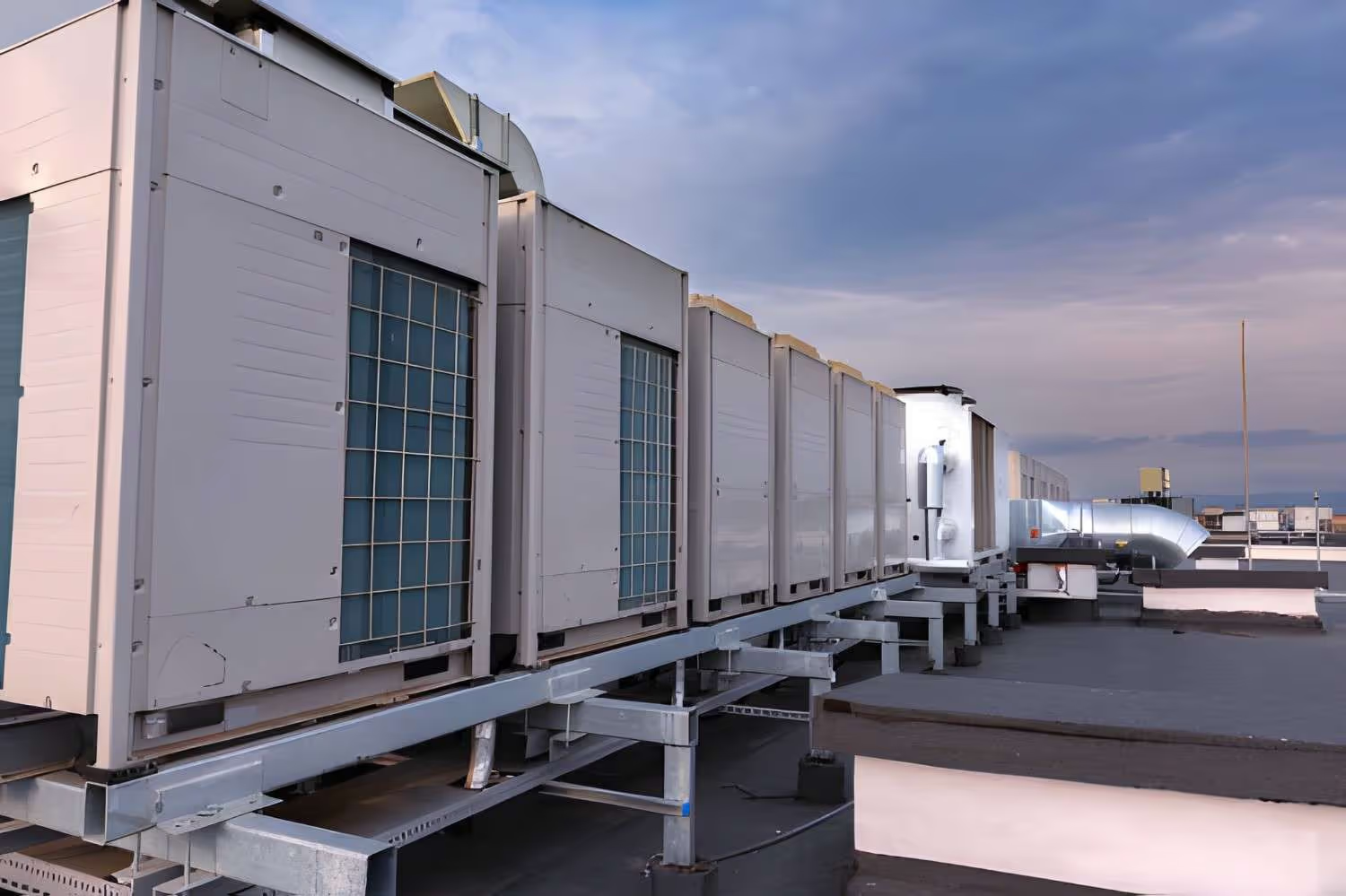HVAC Company in Clearwater, FL


Common HVAC issues in Clearwater, FL
Homeowners and facility managers in Clearwater frequently encounter the same set of problems driven by climate and coastal conditions:
- Insufficient cooling or warm spots — often caused by undersized equipment, clogged coils, low refrigerant, or duct leaks.
- Frequent short cycling — usually from thermostat problems, electrical issues, or improper system sizing.
- High energy bills — inefficient or aging equipment, dirty components, or poor duct sealing.
- Corrosion and compressor failure — salt air speeds corrosion on outdoor units, terminals, and coils.
- Moisture-related issues and mold — high humidity can lead to condensate backup, mold in ducts, and musty indoor air.
- Poor indoor air quality — allergies and odors worsened by inadequate filtration, ventilation, or unchecked humidity.
- Noisy operation — loose components, failing bearings, or imbalanced fans.
- Intermittent operation or electrical faults — caused by wiring, capacitors, relays, or control failures.
Services offered — overview and what to expect
A full-service HVAC provider in Clearwater covers installation, replacement, preventative maintenance, diagnostics and 24/7 emergency repair, indoor air quality solutions, ductwork services, energy-efficiency upgrades with rebate assistance, and service plans. Each service is executed with attention to coastal environmental factors and local code requirements.
Installation and replacement
- Proper sizing and design: performance starts with accurate load calculations (Manual J) to match equipment to the building and occupancy.
- Equipment selection: options include high-efficiency ACs, heat pumps suitable for Florida’s climate, and variable-speed systems that reduce humidity and energy use.
- Quality installation practices: correct refrigerant charge, proper duct connections, adequate condensate drainage, and corrosion-resistant components for coastal climates.
Routine maintenance and seasonal tune-ups
- Typical tune-up tasks include cleaning coils, checking refrigerant levels, testing compressors and capacitors, lubricating motors, inspecting electrical connections, calibrating thermostats, clearing condensate drains, and replacing filters.
- Seasonal maintenance reduces breakdown risk during peak summer demand and optimizes efficiency, extending equipment life.
Diagnostics and 24/7 emergency repair
- Systematic troubleshooting starts with symptom intake and visual inspection, followed by electrical diagnostics, pressure and temperature checks, airflow measurement, and leak detection tools.
- Emergency repairs address failed compressors, refrigerant leaks, run capacitors, control board failures, and blower motor replacements with priority response for unsafe conditions or total loss of cooling.
- Technicians provide transparent repair options: temporary repairs to restore operation or recommended replacements when systems are near end of life.
Indoor air quality (IAQ) solutions
- Whole-home filtration upgrades (higher MERV filters), HEPA filtration for sensitive occupants, UV germicidal lights for coils, and dehumidification systems to control humidity and reduce mold risk.
- Duct cleaning and sanitizing reduce particulate load and allergy triggers common in humid climates.
Ductwork repair and installation
- Sealing and insulating ducts reduces energy loss and prevents humid outdoor air infiltration.
- Properly sized and balanced duct systems improve airflow and even temperature distribution.
- Repair of damaged or corroded duct sections preserves indoor comfort and equipment performance.
Energy-efficiency upgrades and rebate assistance
- Upgrades such as high-SEER air conditioners, heat pumps, variable-speed compressors, and smart thermostats reduce energy use and improve dehumidification.
- Assistance navigating local utility rebate programs and incentives helps homeowners capture available savings and shorten payback periods.
Technician certifications and brands serviced
- Typical credentials: NATE certification, EPA Section 608 refrigerant handling certification, and manufacturer-specific training for major brands.
- Commonly serviced brands include Carrier, Trane, Lennox, Rheem, Goodman, Bryant, and others; certified technicians follow manufacturer procedures to preserve warranties and ensure reliable performance.
Warranty and financing overview
- Customers are supported by a combination of manufacturer warranties and labor warranties. It is important to understand what each covers and any maintenance requirements to keep warranties valid.
- Financing options are commonly available for major replacements and efficiency upgrades, including plans that align payments with expected energy savings.
Service plans and maintenance agreements
- Service plans typically include annual or biannual tune-ups, priority scheduling, discounted repair rates, and remote reminders for seasonal maintenance.
- A maintenance agreement is often the most cost-effective way to prevent emergency breakdowns, stabilize operating costs, and protect equipment warranties.
How diagnostics and repairs are performed (what to expect)
- Step 1: Intake and symptom documentation — clear description of the issue, occupancy patterns, and any recent changes.
- Step 2: Visual inspection — check outdoor unit, electrical panel, air handler, duct connections, and thermostat wiring.
- Step 3: System performance checks — measure temperatures, pressures, amperage draw, airflow, and refrigerant charge.
- Step 4: Identify root cause — determine whether repair, component replacement, or full system replacement is appropriate.
- Step 5: Present options and explain expected outcomes and warranty implications.
Maintenance tips for Clearwater homeowners and businesses
- Replace or clean filters monthly during peak cooling season to maintain airflow and efficiency.
- Keep outdoor units clear of salt spray, landscaping, and debris; rinse coils periodically with fresh water if corrosion is a concern.
- Ensure condensate drains are clear and sloped properly to prevent backups and mold growth.
- Use a programmable or smart thermostat to optimize setpoints and reduce run-time during unoccupied periods.
- Consider a whole-home dehumidifier or ventilation upgrade to control interior humidity and improve comfort without lowering thermostat setpoints.
Why timely HVAC service matters in Clearwater, FL
Timely inspections, seasonal tune-ups, and prompt repairs protect against costly mid-summer failures, reduce energy consumption, and extend equipment life in a coastal, humid environment. Properly maintained systems improve indoor comfort, reduce allergy triggers, and help manage utility costs in a region where air conditioning is essential for most of the year. For homes and businesses in Clearwater, tailored HVAC care combines technical expertise with local knowledge of climate impacts and regional rebate opportunities to deliver reliable, efficient comfort.
Service Areas


